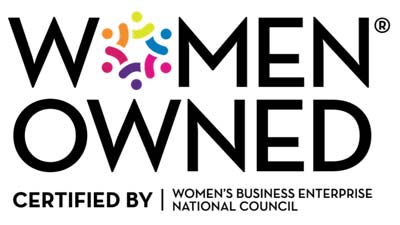Your corporate brand is important because it does two huge things: it helps your team stay focused and excited about your organization and its goals/mission, and it shows people outside your organization what you’re all about.
Why would something so obviously needing attention be neglected?
The lack of knowledge about the importance of branding.
TIPS:
1) Emphasize the importance of branding by sharing posts like this.
2) Slowly educating your team by respectfully pointing out do's and don't.
The lack of knowledge of how to create and stay on-brand.
TIPS:
1) Request 5 minutes per week to teach one thing that you are doing to establish your brand.
2) Get input & buy-in from your team.
SIMPLE TOP 10 CORPORATE BRANDING TIPS
That You Can Start Implementing TODAY!
Create a Clear Brand Identity
Brand identity is basically the collection of elements that your company creates to portray an image to your team and target. Develop a brand that reflects your company's mission, values and vision. You might need to take a step back and create a solid mission statement as well as establish values and a vision. Your mission is your purpose more than what you do (why your company exists). Your vision is what your company aspires to be or its direction. In short, your mission is the guide to accomplish your vision. Values are the standards your company follow firmly in pursuit of its mission and vision..
Sculpt Your Brand Personality
Brand personality directs the voice, tone and style through which your brand communicates. Imagine your company as a person. What would that person look and act like? Brand identity is the collection of elements to portray an image of your company while your brand personality refers to characteristics, feelings and emotional qualities customers associate with your brand. It is from your customers perspective. Create a brand personality that is unique and authentic to your company. Mission, values and vision are important in establishing an identity and personality.
Consistency In Your Brand
Take the time to make sure all branding materials (logos, colors, type, website, apparel, promo and messaging) are consistent across all platforms. Start with a professionally created branding guide. This should identify what colors to use on a dark background and light background as well as supporting colors. In addition, it should have dos and don'ts for how your logo is to be presented. One example is to always keep your logo in proportion (not squished) and give your logo breathing room.
Start by determining your target through market research, google analytics, customer analysis, competitor analysis etc. Then tailor your branding efforts to appeal to them. A shotgun approach might bring in some business, but are they the best for your company direction? Your target needs to align with your company's mission, vision and objectives. If your target doesn't match your identity then you have an identity crisis and you need to determine what must change. Note: Target market is the large group that could benefit from your products/services. Target audience is a narrowed down segment of your target market that you want to be serve up your advertisements/messages.
Identify Your Unique Selling Proposition
Differentiate yourself from competitors in your messaging by highlighting your unique selling points and key differentiators. Make it a specific and clear benefit that makes your business stand out when compared to competitors. It’s not necessarily a product or service that is unique, but the message you choose to focus on that your competition doesn’t. It does not have to be something huge, so list all that is unique even if it is something small and build on your uniqueness.
Invest in your branding materials to ensure they look polished and professional. If you don't have anyone in your company to pull this off - hire a professional. There are tons of resources locally and online. Pick what works best for your company and your budget. Cheap does not equal good. Be sure and share your branding guide with whomever is helping you with your design, printing, promo, website etc. If you have everything together, but your execution is poor then your campaigns will likely fall short of your goals.
Storytelling for Emotional Connection
It is human nature to be drawn to stories. We like getting close to characters and empathizing with their challenges. Use storytelling to make a deeper emotional connection with your audience and build brand loyalty. Storytelling strategy helps your audience learn more about your brand and purpose as well as your products and/or services. Storytelling brings life to your brand, sets you apart and makes you memorable. Brainstorm with your team (sales and customer service team, executives, or anyone directly connected to your customer) to develop customer case studies. View the process through the eyes of your customer and keep it simple, real and relatable. You are talking too people and not empty vessels that need your products/service.
Don't ignore those that take the time to give your company positive or negative reviews. Your brand is on the line and under constant scrutiny. Respond to online reviews and feedback to show that you value customer opinions and are committed to improvement. Frequently check Facebook, google, Amazon, Yelp, TripAdvisor, BBB etc. Most of us can relate to this with our friendships. There are those that take days to respond to a text/emails or they never return calls. Some of us take the lack of a quick reply personally and being ghosted completely blows the mind. There are also those that respond too emotionally or, on the flip, too "matter-of-fact." So, think of this situation like a personal relationship and stay on top of reviews and respond calmly and thoroughly, but do your best to not get into the weeds or sound like a canned response.
Social media is a great place to reveal your brand's personality and tell your story. If you are a small team with limited time/personnel, pick one or two channels that fits your company's identity and personality. If you are a B2B company, consider LinkedIn. If you have great stories that can be told with video, consider YouTube. Use social media to your advantage by creating compelling content and engaging with your audience. Check out your competitors, don't bite off more than you can chew and make sure your content is aligned with your over all goals, identity and personality. Social media can suck time away and no matter how much time you spend you will always feel like it is not enough. Know that it will likely take at least 5-6 hours per week per channel to creating good content even after you have a plan in place. Plan, plan, plan, why, where and what. Posting something somewhere just to post will likely not yield great results.
Evaluate & Adjust Continually
Things change quickly in marketing due to society and technology, so keep evaluating and adjusting your branding efforts to ensure they align with your business goals and resonate with your target. There are many Key Performance Indicators (KPI) when it comes to marketing your brand, which goes beyond the scope of this article. Below are a few of the most common KPIs:


